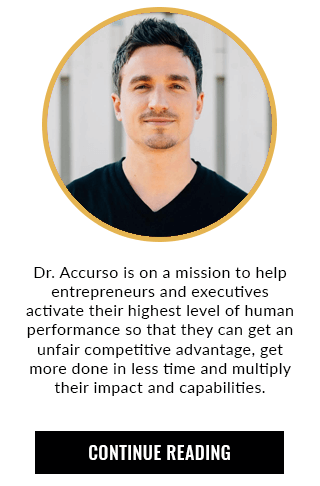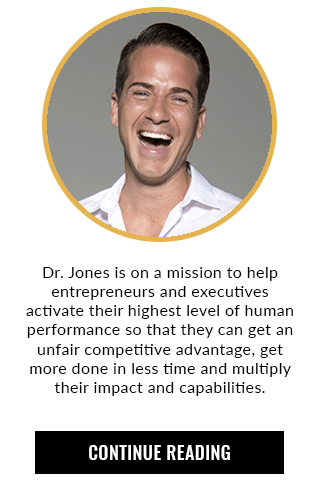The Science of How to Optimize Brain Function & Get Lean By Getting Your Body Into Fat Burning State.
What blocks you from getting into fat-burning state? Dr. Jones gives a book review of Keto Clarity
Why would one want to get into fat burning state? As an entrepreneur, you want to access fat burning state regularly. Ketosis is something you don’t want to be in all the time, but learning how to get into this state can help you in dozens of ways. I’m in the last 3 years I’ve been in ketosis roughly 70% of the time. Here are some of the main benefits that you can expect:
- Appetite and hunger control due to balancing hormones
- Effortless weight loss (for people that don’t lose weight, it’s hormone and need consultation here)
- Mental clarity and increased brain performance
- Sounder, more restful sleep
- Optimize metabolic function
- Lowers inflammatory markers
- Restores normal blood sugar levels and insulin sensitivity
- Increase in HDL
- Lowers triglycerides
- Increased feeling of happiness and wellbeing
- Eliminates heartburn
- Increases fertility
- Prevents brain injury (especially if your just had an accident… ketosis is essential!)
- Improves immune system function
- Decreases mood swings
- Creates all-day energy
On the last point, what I’ve noticed, is when I choose to come out of fat-burning state and eat a higher carb meal, I feel the difference in energy immediately. It’s remarkable really.
In the video above I do a book review of the KetoClarity.
This is one of the best books I’ve read on getting into ketosis and what blocks your ability to get and stay into ketosis.
In the video above you’re going to learn dozens of helpful tips including:
- How can you tell when you are in ketosis?
- What can you do to access ketosis the fastest?
- What keeps you out of ketosis?
- What is your carb tolerance and how can you tell when you’ve hit it?
- Why is there so much confusion around ketosis?
- Is getting into nutritional ketosis the “Atkins Diet” (short answer is “no!”)
- Can you be healthy in ketosis? If so how?
- What technologies can we use to measure the level of fat burning you are in?
- What does the solid science say about getting into nutritional ketosis?
If you don’t have time to watch the video above, then simply understand the three main reasons why people don’t start using fat for energy through accessing ketosis. These are the main reasons why people stay in “sugar burning state”:
- You’re eating too many hidden sugars - You may not realize this, but your dessert salad has more sugar in it than a McDonalds happy meal. Why? Because of the amount of sugar they are putting in salad dressings. This is one of a hundred examples I could use where people unknowingly are consuming hidden sugars that block their ability from getting into fat burning state or what they call “keto-adapted”.
ACTION: Read the labels on all of the products that you consume. Don’t just read the amount of sugar is in each serving, but the amount of carbohydrate that turns to sugar inside of the body. Potato chips don’t have much-added sugar, but the amount of carbohydrates that turns to sugar once it’s digested is a completely different story. - You’re eating too much protein - You may be confused on this. “What? Are you saying protein is bad for me?” No. Protein is essential for you, but the over-consumption of protein can block your ability to get into ketosis. If you want to use fat for energy and get all the benefits of it, then consuming over 25 grams per meal if your a women or over 35 grams per meal if you’re a man should be avoided. Why? Because the excess amino acids convert to sugar inside of the liver.
ACTION: There are roughly 6-7 grams of protein per ounce of meat. If you consume a 16-ounce stake, you could be consuming 112 grams of protein in that meal. And you wonder why it’s so hard to get rid of that spare tire! All that excess protein is converted into sugar! The general guideline of consuming a palm-sized portion for whatever your body size is per meal is a good guideline. - You’re not eating enough fat - Fat is a superfood. You heard me correctly. Many so called “superfoods” can actually be problematic. For instance, I just recently got a neurotransmitter profile back from one of my clients that I’m sure you know. His Glycine was elevated blocking GABA from creating it’s calming effect throughout the day. It turns out he eats a ton of chlorella, which drives up Glycine. The take away from this is that superfoods aren’t “bad for you”. Rather, what we think of as superfoods should be rotated and not overconsumed. What can be consumed every day and in high quantities is healthy fat! Why is it a superfood? Because it’s the building block of your body full of essential minerals and factors that maximize cellular function.
ACTION: Consume 6-8 additional tablespoons of healthy fats in your diet each day. This is what it looks like for me… I blend 1 tbls of coconut oil and 1 tbls of butter into my shake or tea in the morning. For my first meal of the day I will add some other healthy fat such as olive oil, avocados, macadamia nut oil, cumin seed oil or another, and I will do the same for at dinner. Each meal I add another 2-3 tablespoons of healthy fat.
What you really need to do is watch the video above and take notes. If you have time, do this now.
Please share this video with your loved ones, your team or your firm. It will add a ton of value to their lives.
If your interested in getting a customized health program tailored to you, then you can work with myself or Dr. Accurso by clicking the appropriate link.
Note that the entire process of working with me is going to be more of an investment than it would be working with Dr. Accurso.
To Pioneering The Future of High Performance & Healthcare,
Dr. Jones




